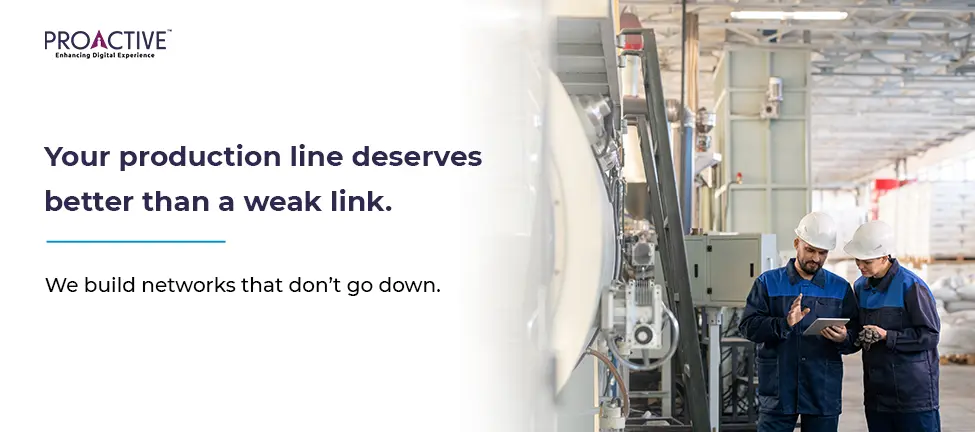Updated: July 17, 2025

One Cable Fault Shouldn’t Stop a Factory
On a shop floor in Pune, a robotic arm stalls mid-assembly. In Manesar, an automated packing line loses sync. In Chennai, a shift supervisor cannot access the quality control dashboard. Each of these disruptions costs money, time, and sometimes, reputation.
And in most cases, the root cause is not the machine; it’s the network.
Factories run on connectivity. But few invest in networking like they invest in machinery. That gap creates fragile systems where one router reboot can slow production, one bad port can delay shipments, and one missed firmware update can cascade into hours of lost productivity.
If your plant runs on data, sensors, and automation, then your network should be treated as critical infrastructure.
Why Network Downtime Hurts More in Manufacturing
A few minutes of downtime in a corporate office may mean rescheduling meetings. In a manufacturing plant, it could mean an entire batch scrapped, a logistics chain delayed, or production targets missed.
Here’s why downtime hits harder in factories:
In short, when the network fails, the entire floor suffers.
Five Ways to Build Resilient Factory Networks
1. Redundancy Shouldn’t Be Optional
In plant environments, single points of failure are a liability. A switch failure shouldn’t bring down an entire zone. Redundancy must be baked into both the hardware and the topology.
What to do: Use dual uplinks, redundant power supplies, and high-availability firewalls. Design for failover. Plan for worst-case scenarios.
2. Segment for Containment, Not Just Structure
Flat networks are easier to deploy, but they’re harder to contain when things go wrong. If a PLC gets compromised or a device misbehaves, the blast radius should be minimal.
What to do: Use VLANs and microsegmentation to isolate zones like assembly, packaging, and QC. Use Cisco ISE to apply a policy based on device identity and function.
3. Control from the Cloud, Monitor from the Floor
Factories sprawl. IT teams can’t be everywhere. And every floor looks different. A cloud-managed platform bridges this gap.
What to do: Deploy Cisco Meraki for centralized control. Combine it with on-site sensors and smart cameras for real-time visibility. This hybrid model brings global control with local insight.
4. Design for Noise, Heat, and Dust
Industrial environments aren’t clean labs. They’re loud, hot, and full of interference. Networking gear designed for offices will fail.
What to do: Use ruggedized switches and APs rated for industrial use. Shield critical cabling. Test for interference zones before deployment.
5. Automate Updates, Don’t Wait for Them
Many outages trace back to skipped patches or outdated firmware. In fast-paced manufacturing, manual updates get delayed.
What to do: Automate patching schedules through cloud dashboards. Use compliance checks. Push updates during planned maintenance windows.
Why Emerging Manufacturers Need This Now
According to a 2024 Deloitte report, 67% of mid-size manufacturers in India plan to adopt full-factory digitalisation by 2026. Without resilient networks, those plans stall.
A modern plant needs zero unplanned downtime. And that starts at Layer 1.
What Proactive Brings to the Floor
Proactive helps manufacturing plants design and deploy factory-grade networks that don’t flinch under pressure. Our teams build for uptime, monitor 24x7, and secure the most demanding OT environments.
We combine Cisco industrial networking gear with tailored designs, role-based access, and environment-specific installs. In factories across Ahmedabad, Sriperumbudur, and Greater Noida, Proactive’s solutions have reduced outages and kept production flowing.
Ask These Questions
If you paused, it’s time to rethink.